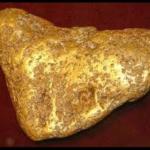What’s the problem at Newmont?

Newmont is the world’s largest gold miner with reserves estimated by the company at approximately 100 million ounces, with 25000 employees worldwide in 5 countries, including Australia.
Next year will see it celebrate 100 years as a gold miner.
It’s a financial behemoth with $3.7 billion in cash at March 31 of which $0.94 billion was generated in the March quarter. Average realised gold prices earned by Newmont rose 22% during the year to March 2020 while production increased by 20% during this period.
Surprisingly, despite these seemingly impressive production numbers and a strong gold price over the past 12 months, Newmont’s share price has risen just 2% during this period, when the gold price has risen 28%. Why?
A few months ago, Newmont withdrew its 2020 earnings outlook citing deferral of production at some mines until 2021, which may impact costs as mines are put on hold and re-opened at a later date. And deferral in production always creates a degree of uncertainty in the minds of discerning investors and experienced analysts. It is for these reasons that some analyst’s earnings estimates for Newmont have been marked down.
But are there other reasons for Newmont’s share price to underperform the broader gold market over the past year?
Perhaps the merger with Goldcorp finalised in April 2019 hasn’t delivered the ambitious synergies forecast at the time the transaction was announced? Or did Newmont simply pay too much for Goldcorp?
Newmont paid a 17% premium to Goldcorp shareholders using its shares as currency for the merger transaction. Clearly the market believed that Newmont overpaid for Goldcorp by marking down Newmont’s share price on the day the deal was announced and by 13% post the merger being finalised.
One argument swirling about the market at the time of the merger was that Goldcorp shareholders, who post settlement of the transaction will own 35% of the merged Newmont Goldcorp Group and so get to share in the massive cost-savings of the joint venture forged between Newmont and Barrick pre the merger with Goldcorp, meaning that Goldcorp shareholders participate in the upside of the joint venture without contributing any assets to it.
In other words, 35% of the embedded future cost-savings arising from the Barrick-Newmont joint venture will be delivered to former Goldcorp shareholders for ‘free’. This has the effect of diluting by 35% the returns that would have otherwise accrued to original Newmont shareholders before the merger with Goldcorp.
But that was a year ago so why does the Newmont share price continue to disappoint despite the significantly higher gold production output, significantly higher cashflows and the massive jump in gold reserves?
The reason perhaps lies in the fact that the massive increase in gold reserves to 100 million ounces adds up to a lot of risk and a lot of capital to be outlaid for the exploitation of these reserves, before any gold is produced.
Identifying 100 million ounces of gold reserves is a very different proposition to mining, extracting and selling 100 million ounces of gold, especially when the average cost of production at around $900 per ounce equates to expenditure of $1 trillion dollars! One or two unsuccessful development projects can quickly turn a cash positive balance sheet into a pile of debt owning a few holes in the ground!
Take for example the $8 billion mine development expenditure committed to the Pascua Lama project in South America by Barrick which is yet to generate a single dollar in revenue.
Yes mining is a risky business and there’s a huge difference between a gold mine that produces gold and gold reserves sitting in the ground untouched.
And 100 million ounces of gold reserves is $1 trillion away from 100 million ounces of gold ingots sitting in a bank vault.
Newmont is a gold miner with a ton of potential, and a lot of risk. Time will tell whether the potential outweighs the risk at Newmont.
















Leave a Reply